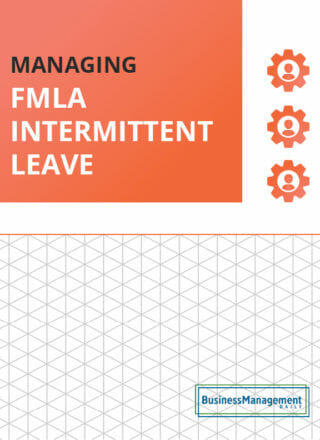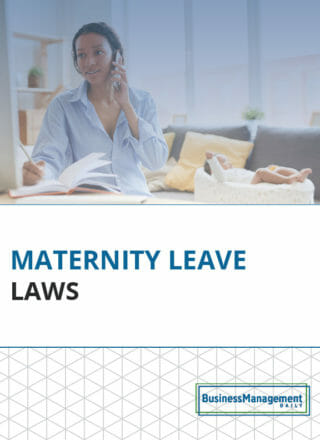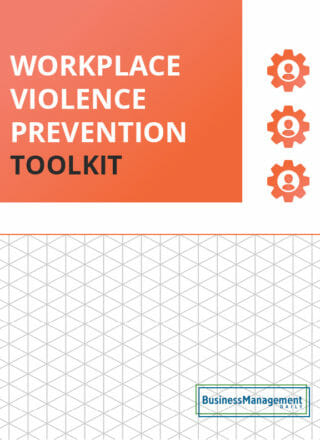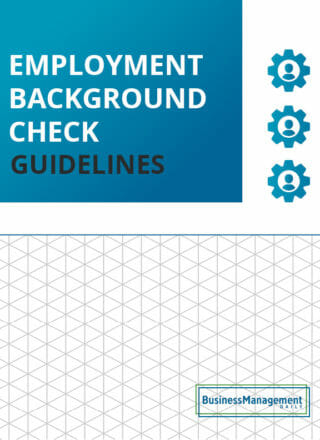Employee leave of absence policy guide
Crafting an adequate leave of absence policy
We all need time off work periodically to rest, recharge, or deal with medical or family matters. Sometimes, employees need time off beyond their sick days or accrued vacation time, and that’s where a leave of absence can come in.
Having a clear employee leave of absence policy is vital because there are many legal requirements, types of leave, and process guidelines to manage when granting leave.
Creating this policy can be complicated, but we’ve outlined the key considerations below to help you better understand how to craft a solid policy.
What is a leave of absence policy?
A leave of absence policy is a documented set of guidelines outlining the process and conditions for employees to take extended time off. It is often a section within the employee handbook.
This section covers various leave types: personal, medical, family, military, and educational. This differs from a singular policy for a single kind of leave.
Advantages of having a clear leave of absence policy
Having a clear, written policy in place not only provides employees with a quick and easy reference of all of your leave policies, but it also offers some added benefits such as;
- Reducing Legal Risks: A well-developed policy helps ensure compliance with relevant laws and regulations and minimize potential legal issues.
- Increasing Productivity: Offering leave allows employees to address significant health and personal matters without undue stress from work, improving focus and productivity upon return.
- Enhanced Company Reputation: A generous leave policy positions the company as a responsible and caring employer and can help you attract top talent.
- Avoiding confusion: A lack of clarity can lead to misunderstandings, frustration, and potential grievances, but having a detailed, written policy reduces the potential for confusion surrounding employee leave.
- Providing better consistency and fairness: The absence of clear guidelines can lead to inconsistent policy application, creating feelings of unfairness, but a well-rounded and consistently applied leave policy will minimize this issue.
- Minimizing operational Disruptions: Unplanned absences can disrupt workflow and productivity, but leave policies to help employees take time off while following a set process for notifying their employer.
Legal considerations around leave of absence policies
You should know a few legal requirements when crafting your leave of absence policy.
FMLA leave
The Family and Medical Leave Act (FMLA) provides unpaid leave for eligible employees. This leave is job-protected. Employees can utilize FMLA leave for various family and medical reasons. Qualifying reasons include family bonding after the birth, adoption, or foster placement of a child.
FMLA leave also covers seeking treatment for a serious health condition. Additionally, it includes caregiving for an immediate family member with a serious health condition. Finally, FMLA leave can be used for unavoidable absences related to a family member’s military service.
Employees can take up to 12 weeks of FMLA leave within 12 months. While they do not need to be paid during FMLA leave, benefits such as health insurance should continue.
The FMLA has particular eligibility requirements that employers must be aware of, particularly if you’re a small business and unsure whether you’re covered under the FMLA.
Your company must meet one of the following conditions to be considered a covered employer:
- Be a private-sector employer with 50 or more employees in 20 or more workweeks in the current or preceding calendar year.
- Be a public agency, including a local, state, or federal government agency.
- Be a public or private elementary or secondary school.
Then, once you’ve determined if the employer is covered, some employee eligibility guidelines must be met. An employee at a covered employer is eligible for FMLA leave if they have:
- Worked for the employer for at least 12 months.
- Worked at least 1,250 hours for the employer within the last 12 months.
- Work at a location where the employer has at least 50 employees within 75 miles.
ADA leave
The Americans with Disabilities Act (ADA) is a federal law that requires employers to provide reasonable accommodations for applicants and employees with disabilities. Unpaid leave is often classified as a reasonable accommodation under the ADA.
Unlike FMLA leave, there are no strict eligibility standards or length of service requirements. The employee just needs to have a disability. The Americans with Disabilities Act (ADA) defines disability as a physical or mental impairment.
This impairment must substantially limit one or more major life activities. Additionally, a record of such an impairment qualifies as a disability. Finally, being regarded as having such an impairment also falls under this definition.
When an employee requests time off as ADA leave, process it as you would any other reasonable accommodation request from a disabled employee.
However, you are not obligated to provide leave if it creates an undue hardship for the business.
Furthermore, you can explore alternative accommodations with the employee to find suitable support options.
State-specific leave laws
Many states also have their own laws, which may sometimes overlap with federal requirements. For example, many states have paid parental leave laws that may overlap with FMLA pregnancy and family leave.
Other states have short-term leave laws covering topics like organ donation, voting, jury duty, domestic violence, and more.
Types of time off covered by a leave of absence policy
There are many different types of leaves of absence. Here are the main ones typically covered under a leave policy.
Medical leave
Medical leave is designed to support employees in caring for their health and addressing significant medical needs. It may be used for surgery, significant injuries or illnesses, and other extended health-related absences beyond regular sick leave. The form of medical leave varies.
It depends on the circumstances and the employee’s eligibility for different programs. Medical leave can take several forms, including FMLA leave, short-term disability leave, ADA leave, or personal leave.
Parental leave
Parental leave, also known as maternity and paternity leave, is a type of leave offered to new parents. It allows them time to bond with their new child.
Parental leave benefits more than just birthing parents. It is typically extended to non-birthing parents as well. Additionally, adopted parents and foster parents are often eligible for this leave.
Military leave
Military leave is time off granted to active or reserve servicemembers. This leave may be used for deployment or attendance at military training activities.
Employees who take time off from their civilian jobs for military service have the right to be reinstated in a comparable position with similar pay and benefits once they return. However, the leave does not need to be paid.
Sabbatical
A sabbatical is an employee benefit that rewards loyalty and longevity with the company. It is often granted after an employee has worked for the company for a set number of years, such as five or seven.
It’s a paid break that allows employees to recharge and focus on personal interests or projects. This type of leave is more common in higher education, but any employer can choose to offer it.
Bereavement leave
While generally not legally required, most employers do offer a few days of paid time off to employees who lose a loved one. This time off can be used for grieving or traveling to attend a funeral.
Many employers set eligibility requirements around what losses qualify an employee for bereavement leave, such as limiting it to close family members.
Personal leave
Offering unpaid personal leave supports employees who require time off exceeding their PTO and whose needs may not align with FMLA or other leave options. For example, this leave can accommodate individuals needing time to process a divorce.
Similarly, it can provide extended support following the loss of a loved one, as traditional bereavement leave often limits time off to a few days. This duration may be insufficient for grieving a close family member.
Intermittent leave
Intermittent leave is a leave of absence taken intermittently as several smaller absences rather than one long period of absence. It is a form of leave granted under the FMLA and can also be used for varying leave types. Reduced schedule leave is another option.
This allows employees to work fewer hours or days per week. They may utilize this option to manage a medical condition or maintain a flexible schedule for personal reasons.
Best practices for creating a leave of absence policy
Ready to create your leave of absence policy? Here are some best practices to keep in mind.
Clearly explain eligibility requirements for each leave type
The eligibility requirements for different leave types can vary, so knowing who is eligible for each form of leave is essential. Some types, like FMLA leave, have particular eligibility guidelines put into place by federal law.
In other cases, you, as the employer, may have discretion over who is eligible. Ensure you explain any requirements, such as being a full-time employee or having worked for the company for a certain period.
Build a simple leave request process
Create a streamlined leave of absence request process, and include any expectations around that process in your policy.
Some things to consider here are:
- Who the designated contact will be? Generally, it’s best to direct leave requests to the human resources department.
- How do you want requests submitted? Do you want employees to submit a request on paper, through email, or through a software system like your time and attendance platform? Will a standardized request form be made available to employees?
- The amount of notice requested. FMLA leave, and other forms of mandatory leave may have legally specified notice periods, but you have a bit more discretion with voluntary leave. Choosing 30 days when possible, or as soon as possible when the need for leave is not foreseeable, generally works well since it aligns with FMLA guidelines.
Create a return-to-work plan
Transitioning from leave to returning to work can be challenging for employees, especially those with extended absences. To help ease this transition, consider developing a plan to help employees transition smoothly into their roles after an extended leave.
To ensure a smooth transition back to work, create a system for tracking employee absences. This system should include missed training materials, process changes, and project updates. This will allow employees to catch up quickly upon their return.
Furthermore, schedule meetings between employees, their managers, and colleagues who covered their work during their absence. Treat these initial days like an orientation period.
If the employee has been absent for an extended period, provide new training and conduct more frequent check-ins. This approach facilitates a successful reintegration into the workplace.
Apply leave policies fairly
One primary purpose of having a leave of absence policy is to make the entire process more fair and consistent for employees. As such, you must stick to your policies and give them to all employees.
Suppose you frequently deviate from the policy or make exceptions in non-urgent situations. That may mean it’s time to update your policy to reflect your procedures and expectations more accurately.
Leave of absence policy FAQs
Explore some commonly asked questions about leave of absence policies.
How long does a leave of absence last?
The length of a leave of absence can vary widely. Bereavement leave lasts only a few days, while parental leave often lasts four to six months. Military leave may last even longer, potentially exceeding a year for eligible service members.
Is offering a leave of absence mandatory?
There are two types of leave: mandatory and voluntary. Mandatory leave covers leave of absence that employers must offer by law, such as FMLA leave for covered employers. Voluntary leave is leave that employers can voluntarily provide, such as personal or sabbatical leave.
Are employees paid during a leave of absence?
The pay received by an employee during a leave of absence is determined by the type of leave and the company’s policy. For instance, FMLA leave is typically unpaid.
However, some state laws provide compensation for pregnancy or disability leave. Additionally, employers can establish policies to compensate employees during parental and medical leave.
More resources:
Get your employee attendance policy right ![]()
What can you not do while on FMLA leave? Top things to look out for ![]()
PTO request policy: A comprehensive guide for employers ![]()





